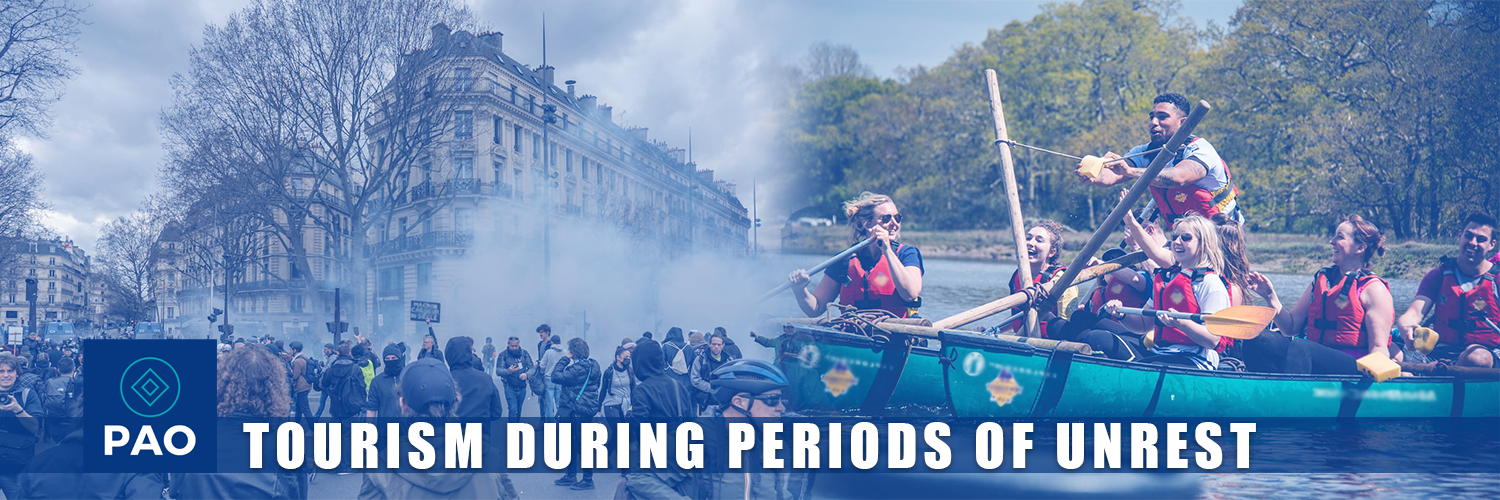Marketing Tourism During Periods of Unrest: Strategies for Success
In a world where social and political landscapes can shift rapidly, tourism destinations must be prepared to navigate the challenges posed by periods of unrest, both within their borders and in neighboring regions. Effective marketing during these times requires a delicate balance of transparency, reassurance, and strategic communication. Here, we explore how destinations like Cambodia, Kenya, New Zealand, and Vietnam have approached these challenges and what other locations can learn from their experiences.

Cambodia’s Rebranding Efforts
Cambodia, known for the majestic Angkor Wat, faced significant hurdles in recent years due to issues such as human trafficking and rising crime rates, which marred its image on the global stage. In response, the country embarked on a comprehensive rebranding campaign focused on enhancing perceptions of safety, celebrating its rich cultural heritage, and promoting eco-tourism. By highlighting new safety initiatives and developing sustainable travel options, particularly in rural areas, Cambodia aims to reassure travelers while attracting new visitors. While the full impact of these efforts remains to be seen, the human trafficking appears to be part of the political environment, nevertheless, the approach underscores the importance of addressing both perception and reality when marketing a destination during troubled times.
Kenya’s Post-Election Experience
Kenya offers another instructive case study. Following the contentious 2008 presidential elections, the country experienced severe unrest that led to a dramatic drop in tourism. To combat this, Kenyan authorities worked diligently to amend international travel advisories and focus on marketing safer regions. This targeted approach, coupled with a strategic communication plan, helped restore tourist confidence over time. Kenya’s experience highlights the necessity of swift action and clear communication to mitigate the negative impacts of social unrest.
Leveraging Geographic Stability: New Zealand and Vietnam
For destinations geographically removed from conflict zones, like New Zealand, stability itself can become a marketable asset. New Zealand has successfully positioned itself as a safe haven during global conflicts, capitalizing on its peaceful environment, stunning natural landscapes, and outdoor adventure opportunities. This strategy has led to increased tourist arrivals, demonstrating that stability and safety are powerful draws for travelers.
Similarly, Vietnam has leveraged its stable political environment to attract visitors, emphasizing its distance from the social unrest that may affect neighboring regions. This approach is particularly effective for destinations that can market themselves as tranquil escapes from the turmoil elsewhere.
The Role of Media in Shaping Perceptions
Media coverage plays a critical role in shaping global perceptions of safety. During periods of unrest, media narratives can amplify fears, deterring potential visitors. To counteract this, destinations must engage in proactive storytelling that emphasizes resilience, positive developments, and the ongoing safety of specific regions. This can include leveraging influencers to showcase safe, enjoyable experiences, and sharing stories of community strength and recovery.
A Strategic Marketing Approach
Marketing during periods of unrest requires a diverse and strategic approach. Destinations must highlight their main attractions while also appealing to niche markets that may be less deterred by instability. For instance, adventure travelers may be drawn to locations perceived as “off the beaten path,” while wellness tourists may seek out destinations offering peace and relaxation far from conflict zones.
To effectively market safety, it’s crucial to cast a wide net, ensuring that the messaging resonates with different demographics. This involves not only focusing on safe experiences and wellness but also sharing stories of resilience and community-driven tourism initiatives.
Conclusion
In the face of social unrest, whether within a country or in the region, tourism marketing must be adaptive, transparent, and strategically diverse. By learning from the experiences of Cambodia, Kenya, New Zealand, and Vietnam, other destinations can develop robust marketing strategies that not only address immediate concerns but also build a foundation for long-term recovery and growth. As always, the key is to balance the message of safety with the intrinsic appeal of the destination, ensuring that travelers are both reassured and inspired to explore.